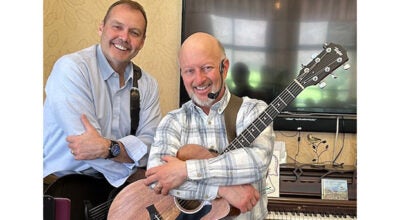Full house at museum lecture on the famed Chicago World’s Fair
Published 1:32 pm Friday, April 8, 2016
As the expression goes, Rome wasn’t built in a day.
It didn’t take a day to build the famed White City, the site of the 1893 World’s Columbian Exposition, either — but only taking two years to construct the 200 building fairgrounds from what once 633 acres of Chicago swampland isn’t an accomplish worth sneezing at.
“It just staggers my imagination,” said Karen Nicholson, a volunteer with Elkhart’s Ruthmere museum and longtime researcher into the historic U.S. event. “They did it without the modern tools we have now.”
Nicholson shared her years of knowledge about the Chicago World’s Fair with a packed house inside the basement of the Dowagiac Area History Museum Wednesday night , during the latest entry in the museum’s Spring Lecture Series. A total of 105 people attended the talk, which was also part of the 2016 One Story schedule of events.
The topic of the famed World Fair fit well with the book being discussed during in this year’s One Story, “Queen of the Woods,” as the story’s author, Simon Pokagon, was a featured speaker during the six-month long public exhibition.
Nicholson, a longtime teacher in Elkhart schools, has been fascinated by the Columbian Exposition since a visit to the Chicago History Museum in her early 20s, when she first saw a display of the famous White City that housed the thousands of exhibitioners during the event.
“The Columbian Exposition was just unbelievable, on all levels,” Nicholson said. “It was such an accomplishment.”
It was the 1893 fair that really established Chicago as a powerhouse city in the U.S., Nicholson said. When U.S. cities began competing to host the Columbian Exposition (named because the fair was meant to commemorate Christopher Columbus’ discovery of the New World) in the late 1880s, Chicago was seen as having little chance of getting it, due to the fact it was still struggling to recover from the Great Chicago Fire of 1871.
“Chicago was kind of a laughing stock,” Nicholson said.
A group of powerful Chicago residents, known as the Commercial Club, set out to change that, seeking congressional approval to host the fair. Going head to head against the front runner to host the fair, New York City, the Chicago leaders secured the rights to host the event after answering one congressman’s call to raise $5 million within 24 hours.
Efforts to design the fairgrounds fell primarily in the hands of three men, John Wellborn Root, Daniel Burnham and Frederick Law Olmsted, with Burnham eventually taking over sole control of the project by 1891. Construction of the site took place at Jackson Park, with the buildings erected at the site spray painted white, leading to the fairgrounds name of “White City.”
The unusual color scheme, combined with the fact it was one of largest single sites in the world to be powered with electricity at the time, made the grounds a sight to see even before the fair officially opened, Nicholson said.
“They actually charged admission for people to watch it get built, believe it or not, and they were successful at it,” she said.
The fair opened on May 1, 1893 and was open through Oct. 30, 1893. During that time, 27.3 million people visited the fair.
The event itself generated around $1 million profit, thanks in large part to admission fees for rides on the world’s first Ferris Wheel, which was 264 feet high and had 36 cars, with each car holding a maximum of 60 people.
“I’ve read accounts that said when it first started, there were so many bolts and screws falling out people had to put umbrellas up to avoid getting hit by them,” Nicholson said.
Among the products introduced at the fair included Quaker Oaks, Hersey Chocolate Bars, Shredded Wheat and Aunt Jemima pancake mix, Nicholson said.
Dowagiac also had a presence at the fair, with Round Oak Stove Company and Dowagiac Manufacturing both having space inside the fair’s manufacturing building, Nicholson said.
The cultural impact of the fair was also massive. Among many other achievements, the fair helped launch anthropology as an established science, helped build increase the momentum of the women’s suffrage movement and also served as the inspiration for The Emerald City featured in L. Frank Baum’s “The Wizard of Oz,” Nicholson said.
But perhaps most importantly, the White City sparked the creation of Burnham’s “Plan of Chicago” in 1909, a document that led the beautification efforts of the Midwest’s largest metropolis.






